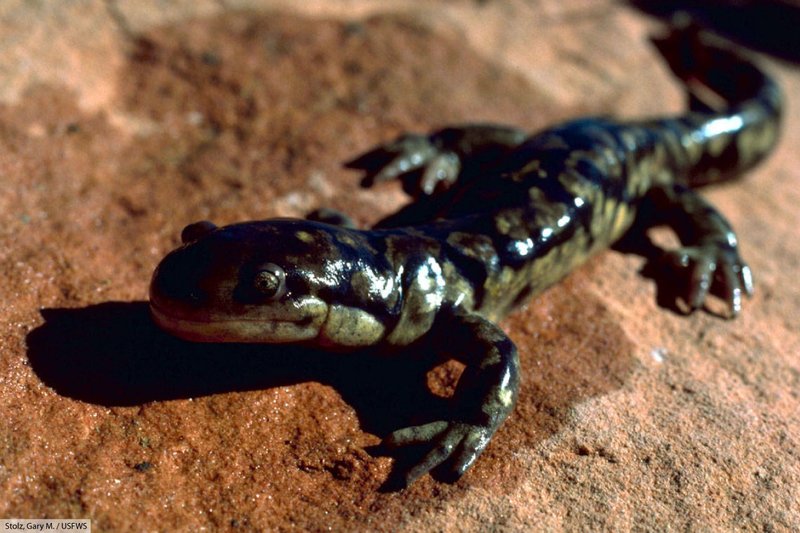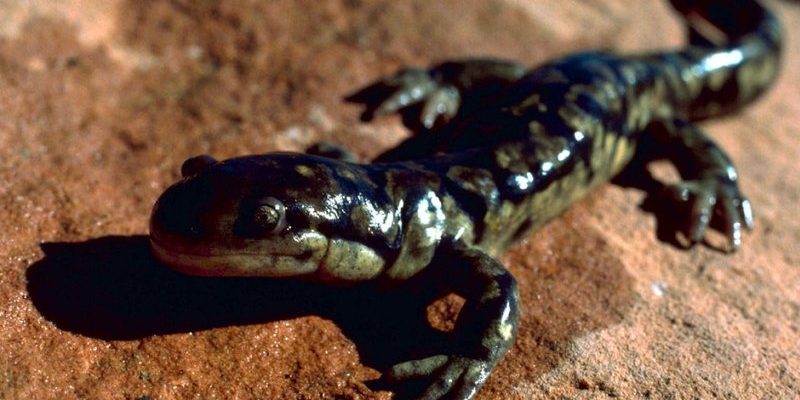
Think of them as the secretive ninjas of the amphibian world. These animals have been around for millions of years, and they’ve adapted in ways that are truly mind-blowing. Whether you’re a nature enthusiast or just curious about these fascinating creatures, you’re in for a treat. Let’s dive into the top ten facts about salamanders that will change the way you see these amazing animals!
1. Salamanders Are Ancient Creatures
Salamanders are often referred to as “living fossils.” They first appeared around 170 million years ago, during the Jurassic period. Isn’t that wild? Imagine sharing the planet with dinosaurs! Their ancient lineage makes them one of the oldest groups of vertebrates still around today.
These creatures belong to the order Urodela, meaning “tailed ones” in Greek. They’ve survived mass extinctions that wiped out many other species. This incredible resilience is partly due to their adaptability, which helps them thrive in various habitats—from forests to wetlands.
You might wonder how they’ve stuck around for so long. Well, their unique features, like regeneration capabilities, give them an edge. They can adapt to changing environments and have developed a variety of lifestyles and behaviors over the years, which keeps them one step ahead in survival.
2. Regeneration: Nature’s Superpower
One of the most fascinating facts about salamanders is their ability to regenerate lost body parts. If they lose a limb, a tail, or even parts of their heart, they can regrow them! This process is not just impressive; it’s also a hot topic for scientific research.
Imagine having a cut that heals without a scar or losing a finger and growing it back completely. That’s what salamanders can do! Their regeneration doesn’t just stop at limbs; they can even regenerate parts of their eyes and brain. Scientists are studying how salamanders accomplish this in hopes of applying their findings to human medicine.
The secret lies in special cells called blastemal cells that form during regrowth. These cells can transform into whatever type of tissue is needed, making salamanders a true marvel of nature.
3. They Come in Different Shapes and Sizes
Salamanders are incredibly diverse, boasting over 600 species worldwide. They vary in size, color, and habitat preferences. Some are as tiny as a finger, while others, like the Chinese giant salamander, can grow up to 5.9 feet long!
Their vibrant colors often serve a purpose, too. Bright hues can signal toxicity or warn predators to stay away. For example, the red-backed salamander showcases a striking red stripe that helps it stand out—an effective defense mechanism!
Not all salamanders are in your backyard; some live in unique environments like caves or underground. The blind salamander, found only in certain Texas caves, has evolved to live without sight. Each species has its own adaptations, making salamanders a fascinating study in evolution.
4. Breathing Through Their Skin
You might be surprised to learn that salamanders breathe through their skin! While they do have lungs, many species rely on cutaneous respiration, which means they absorb oxygen directly from the water or air through their skin.
Because of this unique trait, their skin must remain moist. That’s why you often find them in damp habitats. They also have many tiny blood vessels just beneath the skin, which helps with gas exchange. If their skin dries out, they can struggle to breathe, leading to mortality.
This extraordinary way of breathing highlights their adaptability but also makes them sensitive to environmental changes. Pollution and habitat destruction can significantly impact their survival since clean, moist environments are crucial for their health.
5. Their Life Cycle Is Unique
Salamanders have a life cycle that sets them apart from most other amphibians. After mating, female salamanders typically lay eggs in water or moist areas. Once the eggs hatch, the young, called larvae, usually live in aquatic environments, complete with gills for breathing.
What’s truly fascinating is the metamorphosis process. Unlike frogs that transition to land with legs and lungs, many salamander larvae remain aquatic throughout their lives, which is called neoteny. Some species never lose their gills and maintain their larval form, even as adults.
This unique life cycle offers flexibility in survival, allowing some to thrive in water while others may adapt to life on land. The different strategies they employ to grow and mature showcase the diversity within the salamander family.
6. Salamanders Play a Vital Role in Ecosystems
These little amphibians are more than just interesting to look at; they play a crucial role in their ecosystems. Salamanders help maintain the balance of their environments by acting as both predators and prey.
As carnivores, they feast on insects, worms, and small invertebrates, keeping insect populations in check. At the same time, they serve as a food source for larger animals like birds, snakes, and mammals. This dual role is essential for maintaining healthy ecosystems.
Moreover, their presence can indicate the health of their environment. Because they are sensitive to pollution and habitat changes, a decline in salamander populations can signal broader ecological issues. They act as natural indicators, providing valuable information about the health of ecosystems.
7. Unique Communication Methods
Salamanders have some pretty clever ways of communicating, even though you won’t hear them croaking like frogs. They largely depend on body language and chemical signals to convey messages to one another. Imagine a secret language that only salamanders can understand!
For instance, they often perform specific movements, like waving their tails or showcasing bright colors to attract mates or establish territory. Some species release pheromones, which are chemical signals that carry messages over distance.
This form of communication is vital for their survival. By employing these methods, they can attract mates or warn others of danger without making a sound, keeping them safe from predators.
8. Salamanders Are Sensitive to Their Environment
You might be surprised to learn that salamanders are highly sensitive to environmental changes. Their skin absorbs not just oxygen but also pollutants and chemicals, making them indicators of ecosystem health.
They thrive in clean, moist environments, and any change—like pollution or climate change—can have dire effects on their populations. Many species are facing threats from habitat destruction, climate change, and invasive species.
Protecting salamanders and their habitats is crucial not just for their survival but for the health of entire ecosystems. Every little change in their environment can ripple through the food chain, affecting countless other species.
9. Various Species Have Unique Habitats
As we’ve mentioned, salamanders are incredibly diverse, but what’s even cooler is their adaptability to various habitats. While some prefer damp woodlands, others thrive in mountainous regions or even freshwater rivers.
For example, the Eastern red-spotted newt lives in ponds and streams during its larval stage but spends much of its life in forests. Meanwhile, the Pacific giant salamander prefers the cool, moist environments of rainforest areas.
These habitat preferences highlight their incredible adaptability and the importance of preserving different ecosystems. Each species has evolved to fit its unique environment, showcasing nature’s creativity.
10. Conservation Efforts Are Crucial
Sadly, many salamander species are currently at risk due to habitat loss, pollution, and climate change. Conservation efforts are underway across the globe to help protect these fascinating creatures.
Organizations and researchers are working to preserve habitats and educate the public about salamanders’ crucial role in ecosystems. Programs often focus on habitat restoration and protection, monitoring populations, and implementing policies to reduce pollution.
You can help, too! Simply being aware of salamanders and their importance can lead to better practices in caring for our environment. Whether it’s reducing pesticide use or supporting conservation efforts, every small action counts.
In conclusion, salamanders are not just fascinating; they’re essential parts of our ecosystems. From their incredible regeneration abilities to their important ecological roles, they deserve our attention and protection. So, the next time you see a salamander, take a moment to appreciate the wonders of nature that these little creatures embody!

